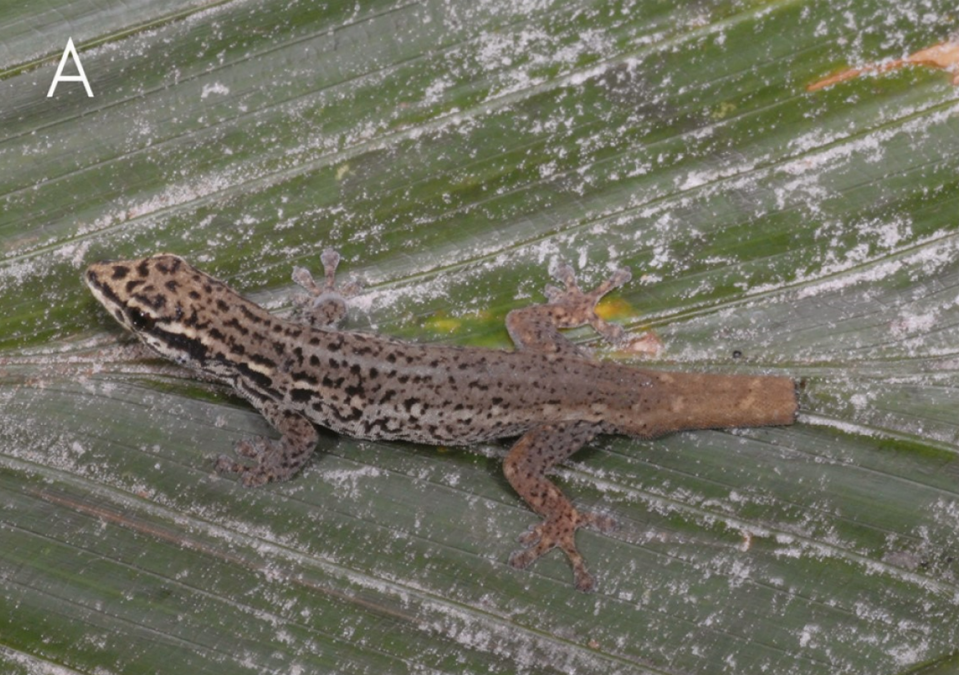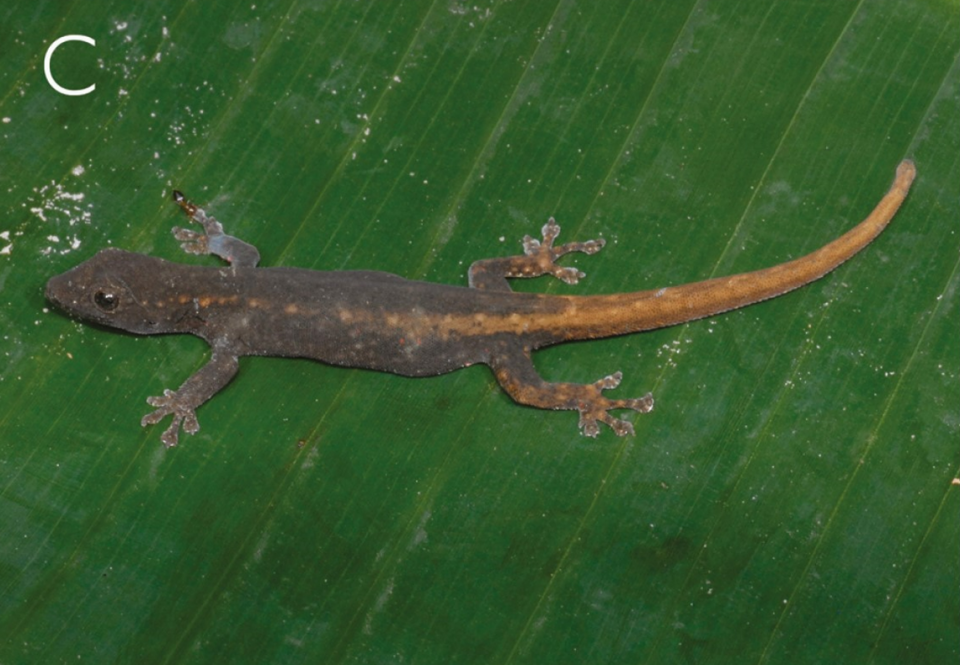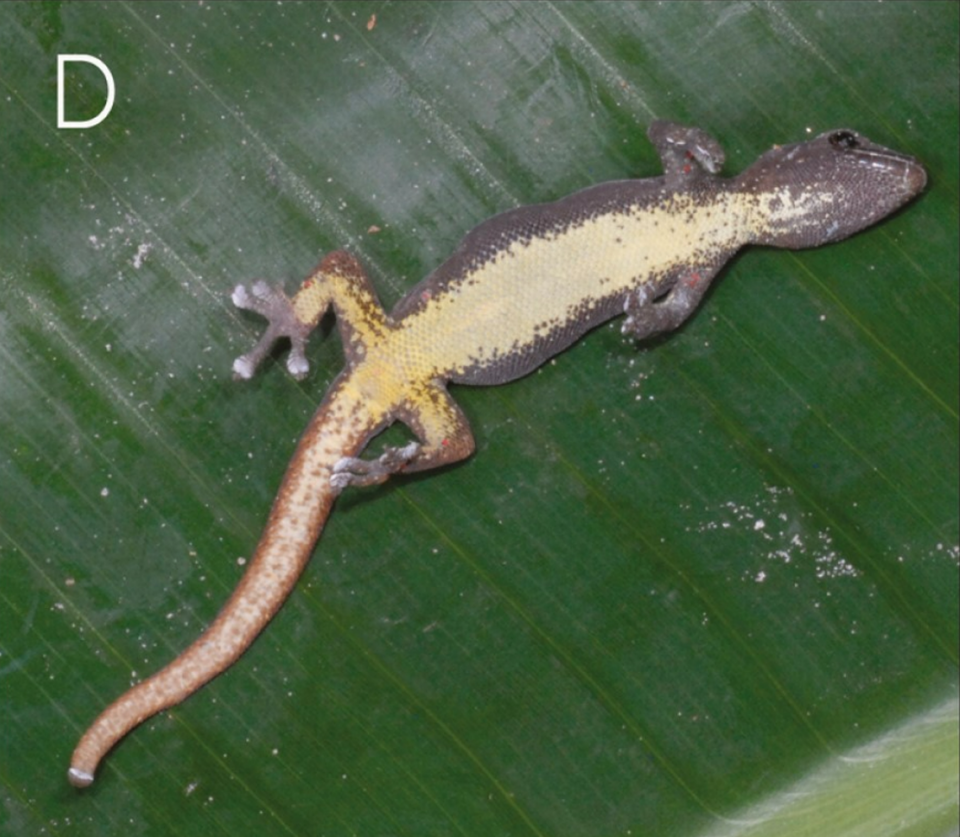Scaly rainforest creature with ‘leopard-like pattern’ turns out to be new species
As the morning sun slipped through the rainforest of the Democratic Republic of the Congo, a scaly creature sat perched on a tree. The animal was “dwarf”-sized but had a “leopard-like pattern.”
Passing scientists noticed the small imitator — and discovered a new species.
Researchers ventured into rainforests of the central African country in 2013 and 2015, according to a study published Sept. 23 in the Zoological Journal of the Linnean Society.
During their surveys, researchers found two “unique” lizards, the study said. In archive collections, they found three more similar-looking lizards caught in the early to mid-1900s. Looking closer at the reptiles, they realized they discovered a new species: Lygodactylus leopardinus, or the leopard dwarf gecko.
The leopard dwarf gecko is considered “moderately sized,” reaching about 2.7 inches in size, the study said. Although male and female geckos vary in color pattern, both have “slender” bodies and “rounded” snouts.
Male leopard dwarf geckos have a “unique leopard-like pattern” on their backs, researchers said. A photo shows the brown gecko covered in black splotches. Underneath its throat, the male geckos have “two ∩-shaped broken dark chevrons.”
Researchers said they named the new species after the male’s pattern.


Female leopard dwarf geckos are “entirely black with an orangish tail,” the study said. A photo shows the relatively pattern-less female gecko that has a burnt orange stripe down its back. This stripe appears to merge and expand into its similarly-colored tail.
The female gecko has no chevrons on its throat, researchers said. A photo shows its solid-colored throat and primarily yellow underside.


Leopard dwarf geckos have been found in five spots across the country’s Congo Basin. These locations are far apart and suggest the new species is “less abundant” but has a “large distribution,” researchers said.
The Democratic Republic of the Congo is in central Africa and borders nine countries: Angola, Burundi, the Central African Republic, the Republic of the Congo, Rwanda, Tanzania, Uganda and Zambia.
The new species was mainly identified by its color pattern but also other “minor” physical features such as its scale pattern, the study said. DNA analysis found the new species had between about 10% and about 15% genetic divergence from other dwarf geckos.
The research team included Javier Lobón-Rovira, Aaron Bauer, Pedro Vaz Pinto, Jean-Francois Trape, Werner Conradie, Chifundera Kusamba, Timóteo Júlio, Garin Cael, Edward Stanley, Daniel Hughes, Mathias Behangana, Franck Masudi, Olivier Pauwels and Eli Greenbaum.
Researchers also discovered four more new species of dwarf geckos: a “large” mountain-dwelling gecko, a “cryptic” woodland gecko, a gecko from a “unique” habitat and a “large” forest-dwelling gecko.
Pregnant ‘dwarf’-like creature found on tree in Uganda is ‘cryptic’ new species
Copper-eyed mountain creature — with pointed ‘spurs’ — discovered as new species
‘Unusual’ forest creature — with ‘eyelashes’ — discovered as new species in Thailand

